Post-run stretches to add to your cool down routine
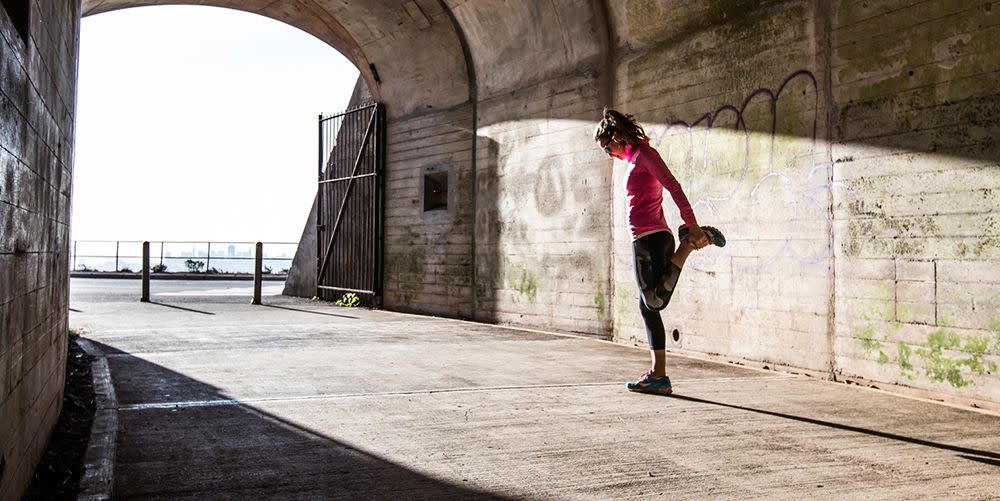
Let's face it, we've all been guilty – probably on multiple counts – of totally forgetting to stretch after the end of a run. You are too cold / too hot / need to get to work / pick up the kids and it just doesn't seem a priority. We get it. But while it may be more time-efficient to skip the stretching, in the long term it may well come back to bite us. Here's everything you need to know about why, and how, to stretch after a run.
What are the benefits of stretching?
Stretching after a run helps to promote blood flow to the muscles, which in turn boosts muscle repair recovery by helping remove lactic acid and waste products. This in turn will actually make you feel better, reducing muscle and joint soreness.
Gentle stretching will also help to improve the flexibility in those running muscles and help improve your range of motion, leaving you less susceptible to muscle strains and over-use injuries.
If you are wondering about stretching before you run – dynamic stretching is certainly recommended as part of your running warm-up, to prepare your body for the activity ahead. This also reduces your risk of muscle strain injuries and has also been shown to improve running performance. However, evidence shows that static stretching – the kind you do after running – is counter-productive before running, so stick to the dynamic kind.
The dos and don’ts of stretching:
Don’t engage in static stretching before a run
You can stretch lightly before speedwork but after a 10-minute warm-up jog
Ease into each stretch; don’t bounce or force it
Never push a stretch to the point you are in discomfort or pain
Before speedwork, hold each stretch for 10-15 seconds
After a run, hold each stretch for up to 30 seconds; repeat once or twice on each leg
Avoid certain stretches that can hamper your performance or increase your risk of a pull or tear. We’ve rounded up the stretches you shouldn’t do.
What are the best runner's stretches?
We've listed 13 runner's stretches below, and depending on how you feel and where your muscles are tight, you can do all of them after every run. If you need to work on a specific muscle, we've also listed some deeper runner's stretches that target specific areas. And we've also included some full-body stretches which target multiple muscle groups – these can be performed once or twice a week or after your run.
Hold all of the below stretches for around half a minute, and depending on how long you’ve got, repeat once or twice on each leg.
The best stretches to do after running
1. Lying hamstring stretch
Keep your upper body relaxed and both legs straight as you pull one leg towards you.
A variation: lying as before, bend the upper knee towards your chest, and with a non-stretching band/cord around the foot of the bent leg, push away with the foot, trying to straighten the leg against the tension of the cord.
You should feel the stretch higher up the hamstring.
2. Lying glute stretch

Lie on the floor and bend both knees, keeping your feet on the floor.
Adjust the angle of your hips and front knee to intensify the stretch.
Place the ankle of one leg on the opposite knee and grasp the thigh of the bottom leg, pulling both legs into your chest.
You leave your grasped leg bent or extend upwards.
You’ll feel a stretch in the muscles around the side of your buttocks.
3. Groin stretch
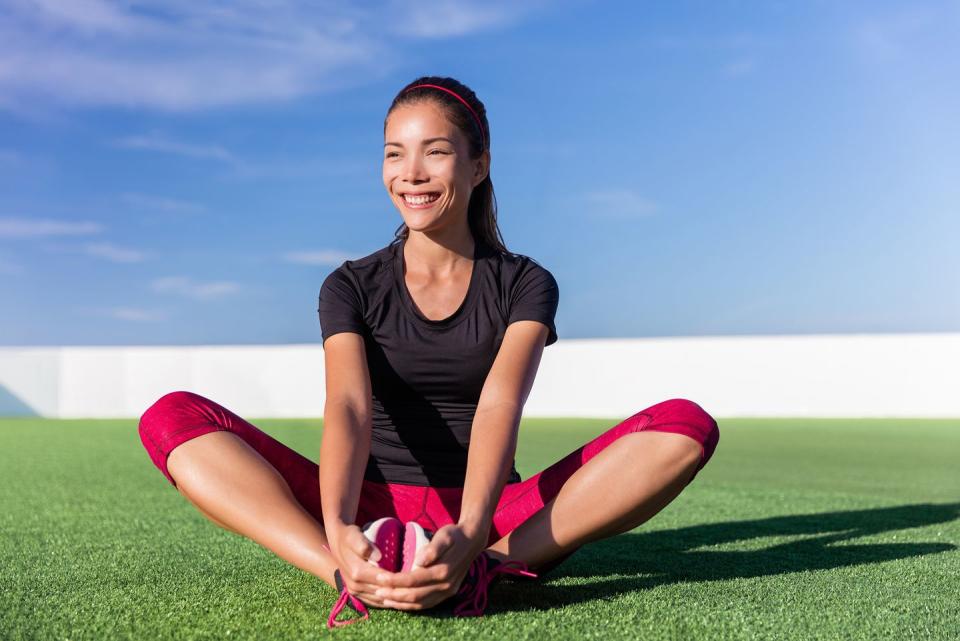
Sit on the floor, place the soles of your feet together and let your knees drop out to the side.
Gently use your leg muscles to move your knees towards the ground.
Keeping a straight back and bringing your feet closer to your body intensifies the stretch.
4. Straight leg calf stretch
Step your left leg forward, knee bent, foot flat on the floor, and extend your right leg straight back, placing your heel flat on the floor.
Keep the right leg straight and lean into the wall until you feel s stretch in the right calf.
5. Soleus (lower calf) stretch
Stand closer to the wall and bend your front leg, keeping the back leg straight with your foot flat on the floor.
Then, lean your hips back, to bend both legs.
You should feel a stretch in the lower calf of your bent leg.
6. Hip flexor stretch
Kneel on the ground on one leg, with the other leg out in front of you and positioned at a 90-degree angle.
Lean your hips forward, keeping your hips squared forward and your upper body vertical; slumping forward reduces the stretch.
Alternatively, watch this video on how to stretch your hip flexors and quads.
7. Standing quadriceps stretch
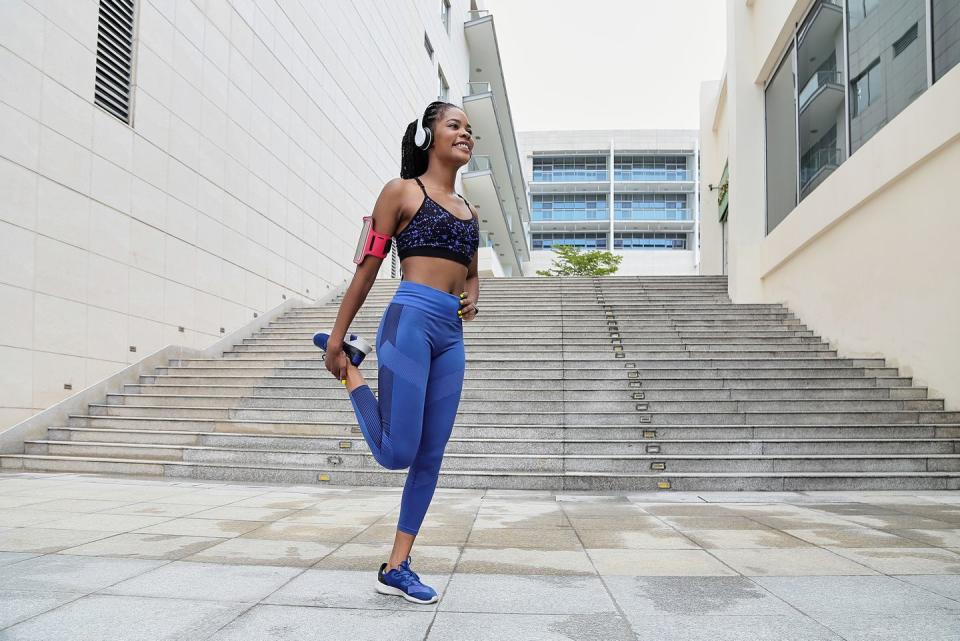
Stand on one leg, bending the knee of your opposite leg by grasping your ankle with one hand.
Flex your foot and keep your body straight to maximise the stretch through the front of your leg.
You can put one hand on a wall if you need balance.
Deeper stretches for runners
If you’re looking for a deeper stretch for your quads, hamstrings, or glutes, try these individual stretches.
8. Quads: Keeling quadriceps stretch against a wall
With a wall behind you, kneel on the floor on one leg, with the knee of your rear leg bent and the toes of your rear foot resting against the wall.
Extend forwards from the hips so that you feel a stretch at the front of your thigh (of the front leg).
Take care if you have ankle problems, and stay tall in your upper body to avoid compressing your lower back.
9. Hamstrings: Bent-leg standing hamstrings stretch
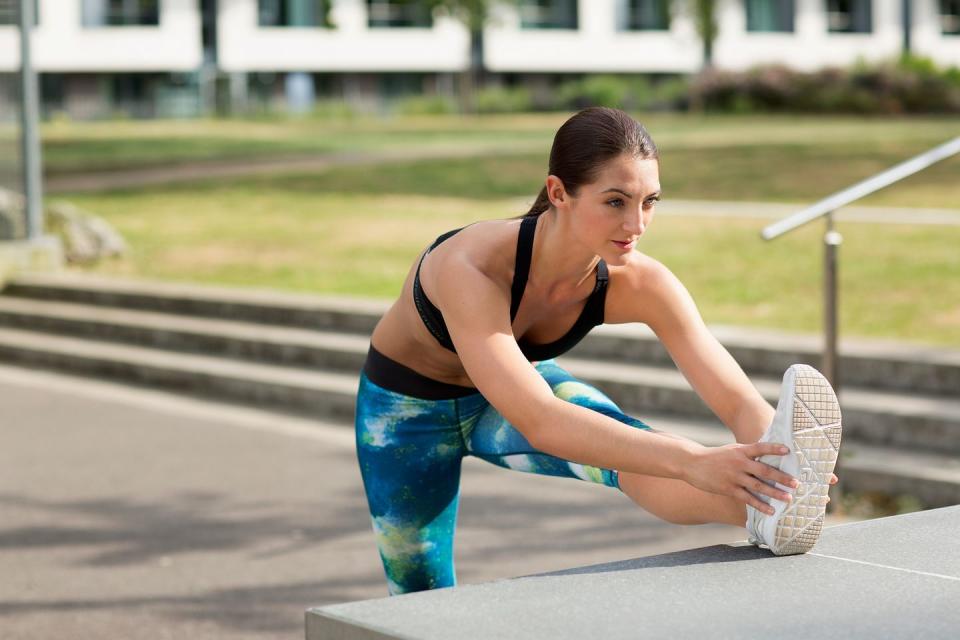
Be thoroughly warmed up before you attempt this one.
Standing on one leg, position one foot on a chair or ledge and bend your upper leg deeply, moving your chest down onto your thigh.
Keeping your chest low, gently try to straighten your upper leg.
10. Glutes: Cross-legged sitting glute stretch
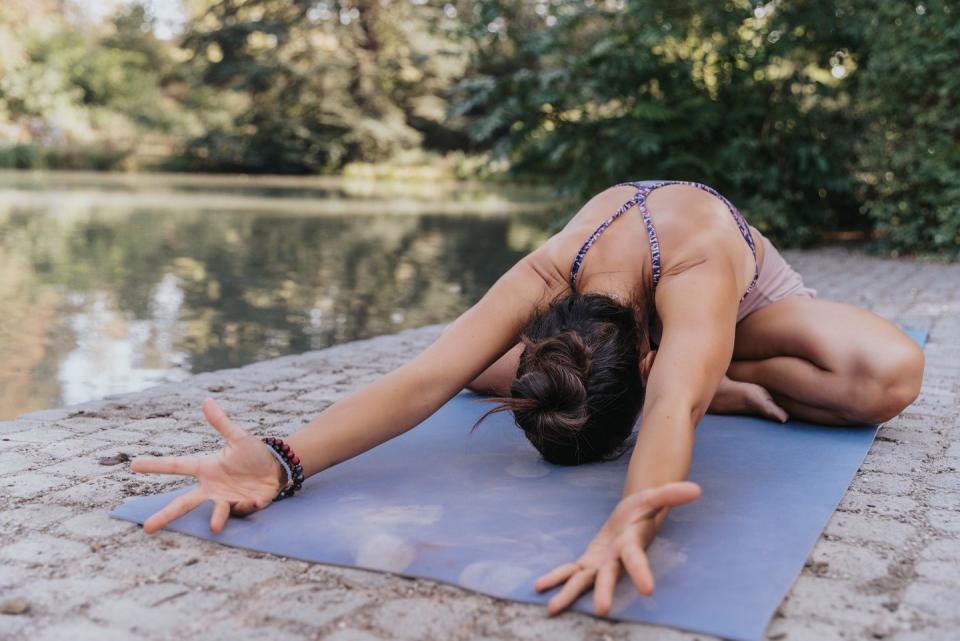
Start in a cross-legged position with your back upright.
Your shins should be parallel to your body and your feet should be as far out to the sides as you can get them.
Keeping a straight back, bend forwards with arms outstretched.
Full-body stretches for runners

These stretch more than one muscle group at once – including your upper body, which is often a neglected area in runners.
11. Downward-facing dog
Keep your feet hip-width apart and your hands shoulder-width apart.
Keep your legs straight, your hips high and lengthen your heels towards the ground (don’t worry if they don’t reach).
Press your palms and fingers flat into the ground; you should feel as though you’re trying to push the floor apart between your hands and feet.
You can enhance the stretch by shifting your weight from one leg to another, by gently bending alternate knees.
Stretches your hamstrings, calves, Achilles tendons, back and shoulders.
12. Lying spinal twist
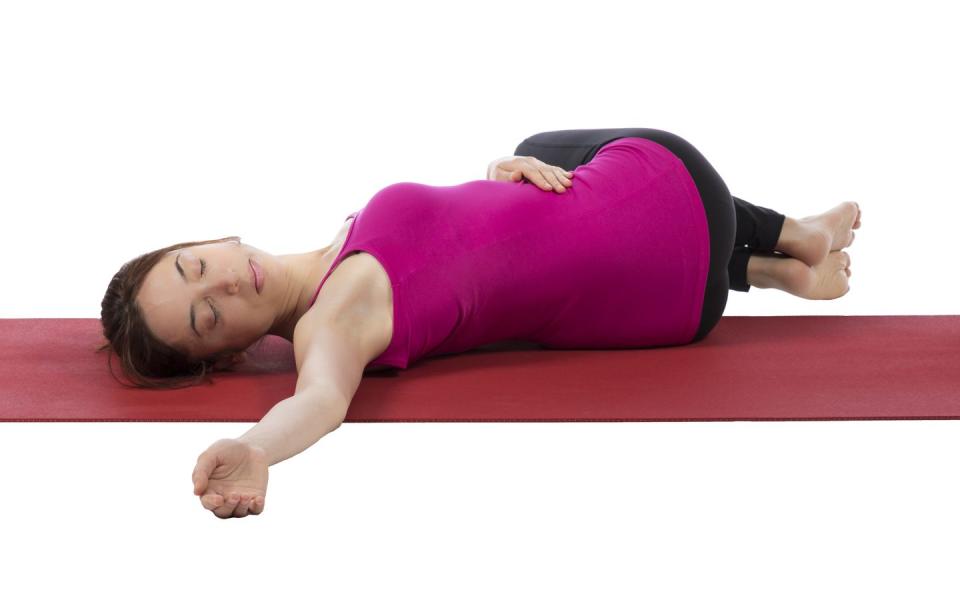
Start on your back with both legs straight.
Hug your right knee in towards your chest, and hook your right foot behind your left knee.
Then roll to your left side, so your right knee touches the floor.
Extend your right arm towards the floor on your right side at head height, and turn your head to look along it.
Relax into the posture, then repeat on the opposite side.
Stretches your gluteals, lower back, upper back, shoulders, arms and chest.
13. Forward-bend shoulder stretch
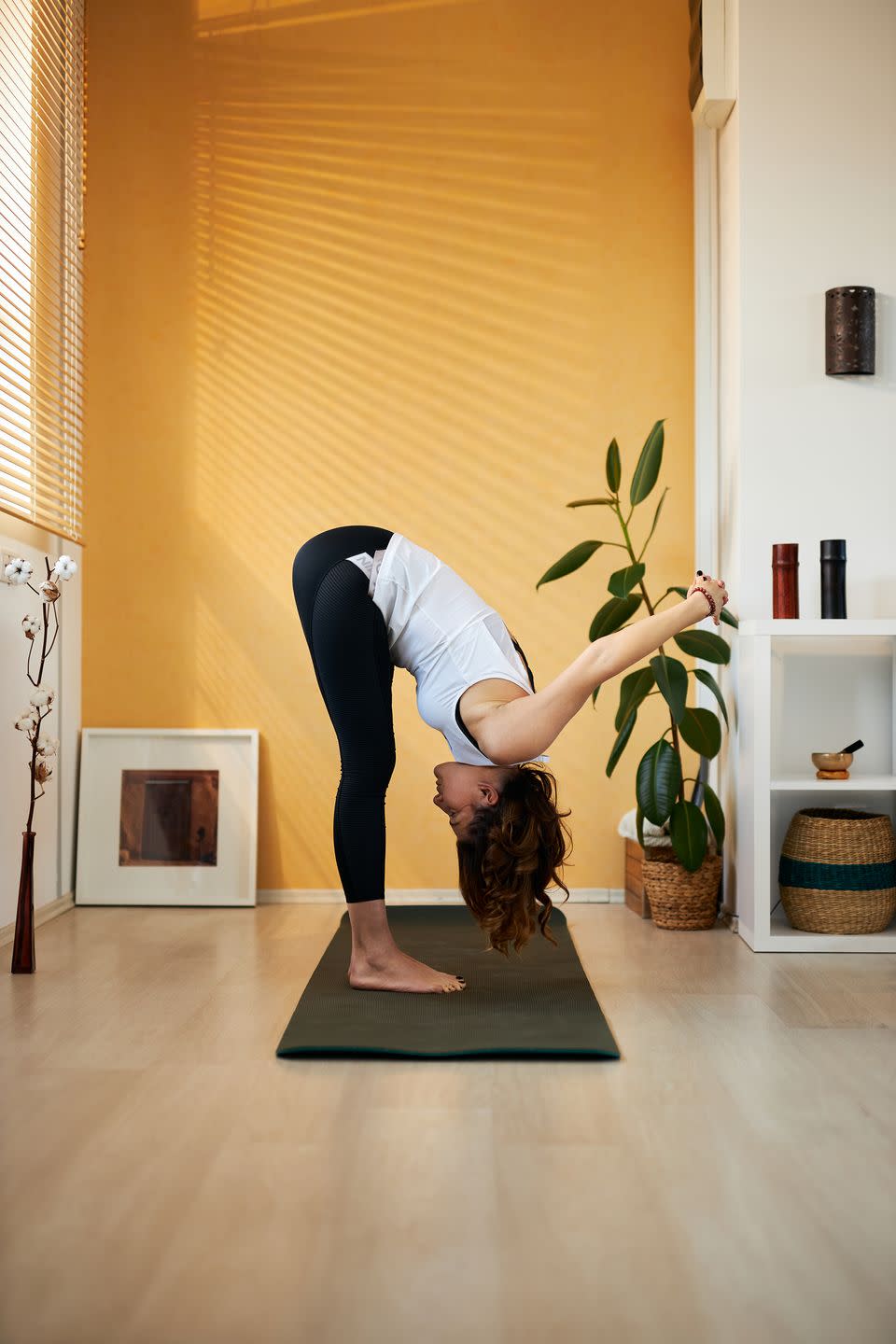
From standing with your feet hip-width apart, fold the body over at the hips, interlacing your fingers together.
Your head should be facing the ground with your quads tensed but your neck relaxed.
Putting your hands on your hips before you stand back up avoids possible lower-back strain.
This stretches your hamstrings, calves, shoulders, chest and arms.
You Might Also Like


